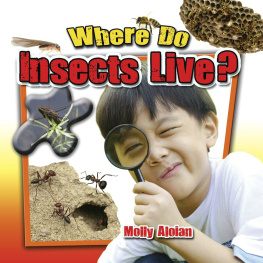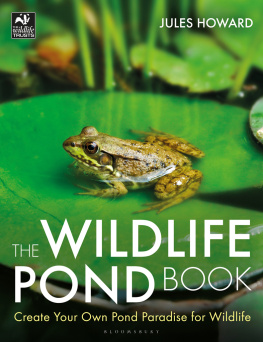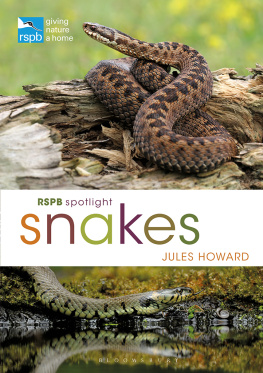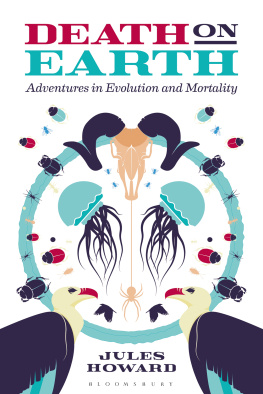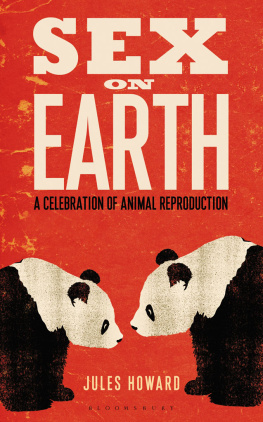Howard Jules - Encyclopedia of Insects
Here you can read online Howard Jules - Encyclopedia of Insects full text of the book (entire story) in english for free. Download pdf and epub, get meaning, cover and reviews about this ebook. year: 2020, publisher: Quarto Publishing Group UK, genre: Romance novel. Description of the work, (preface) as well as reviews are available. Best literature library LitArk.com created for fans of good reading and offers a wide selection of genres:
Romance novel
Science fiction
Adventure
Detective
Science
History
Home and family
Prose
Art
Politics
Computer
Non-fiction
Religion
Business
Children
Humor
Choose a favorite category and find really read worthwhile books. Enjoy immersion in the world of imagination, feel the emotions of the characters or learn something new for yourself, make an fascinating discovery.

- Book:Encyclopedia of Insects
- Author:
- Publisher:Quarto Publishing Group UK
- Genre:
- Year:2020
- Rating:3 / 5
- Favourites:Add to favourites
- Your mark:
- 60
- 1
- 2
- 3
- 4
- 5
Encyclopedia of Insects: summary, description and annotation
We offer to read an annotation, description, summary or preface (depends on what the author of the book "Encyclopedia of Insects" wrote himself). If you haven't found the necessary information about the book — write in the comments, we will try to find it.
Encyclopedia of Insects — read online for free the complete book (whole text) full work
Below is the text of the book, divided by pages. System saving the place of the last page read, allows you to conveniently read the book "Encyclopedia of Insects" online for free, without having to search again every time where you left off. Put a bookmark, and you can go to the page where you finished reading at any time.
Font size:
Interval:
Bookmark:
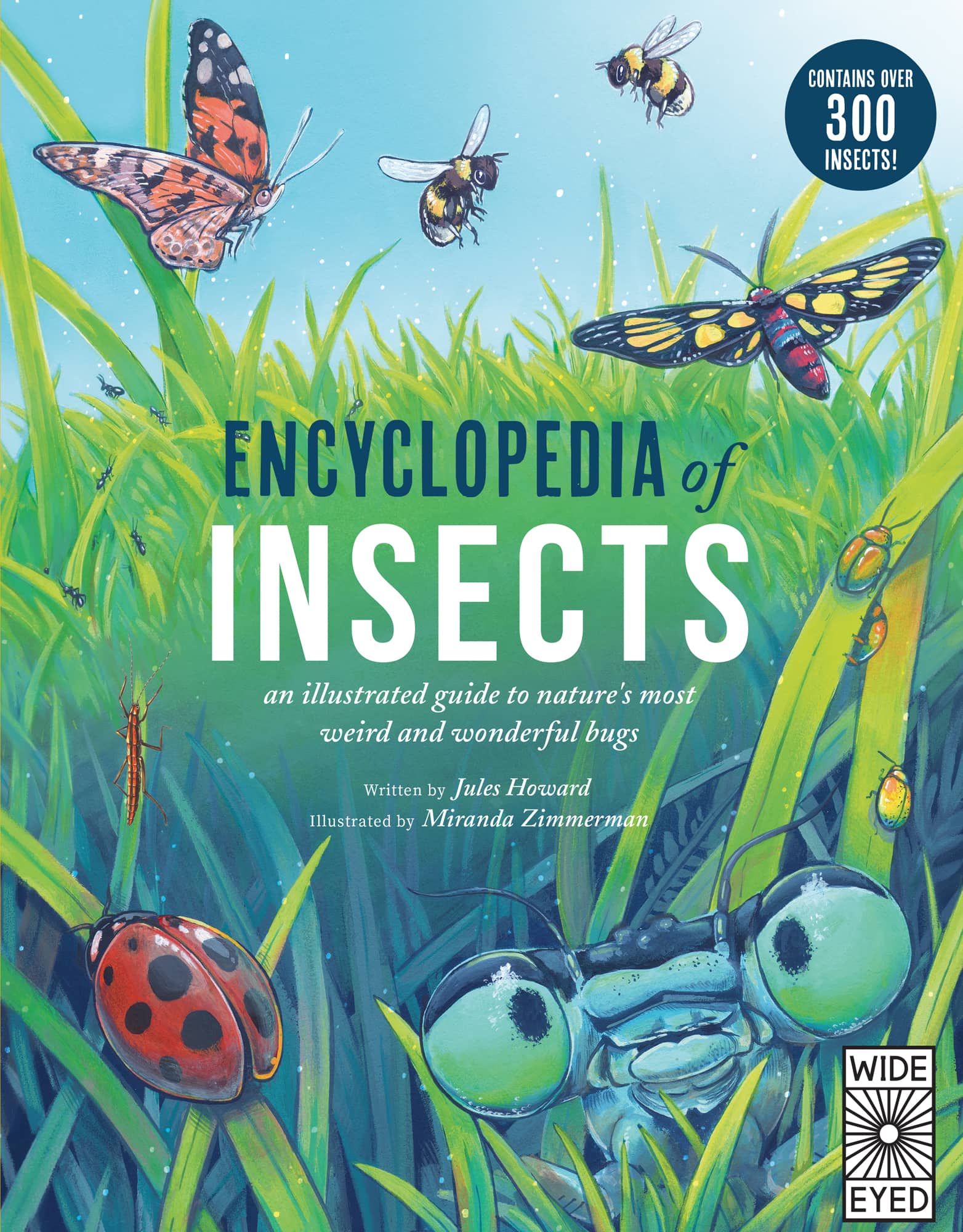
INSECTS



CHAPTER HEADER: Learn about how the species on these pages are linked together.
LATIN NAME: Each species has a scientific Latin name that is the same in all languages.
FACT FILE: Learn amazing facts about each creature here.
You can read this book in any order and in any number of sittings. Read it in your armchair, or take it out into the wild. Read about the creatures you know you love, and then discover many more you had no idea existed!
IF ALIENS WERE TO VISIT OUR PLANET AND MAKE A LIST OF ALL OF EARTHS ANIMALS, THEY WOULD QUICKLY SEE A PATTERN.
Nearly every single one of this planets creatures, they would notice, are from one strange group that has six legs, three segments to their body and, often, a pair of wings. We call these organisms the insects. Because the insect group accounts for 90% of life forms on this planet, alien visitors would be correct in calling this the Planet of Insects. Truly, this is an insect world. You and I just happen to live on it.
The scale of insect life on Earth really is astounding. Insects far outnumber people, and then some. For every single human, there are literally trillions of insects of millions of different species, many not yet named by scientists. They live in our houses, on our trees, in the soil, on the highest mountains and in the deepest rivers. In their billions, insects buzz, weave and scramble through rainforests and woodlands. They thrive in grasslands, deserts and wastelands. They paralyse, they pollinate, they prance and they prowl.
In addition to this, there is not a food source on Earth that comes close to that provided by insects most birds, reptiles and many mammals could not live without the food that they supply. In fact, insects help us in all sorts of ways.

Take the lowly bee, for instance. Overall, there are more than 5,000 species of bee on Earth and each day thousands of millions of them move busily from flower to flower in search of nectar. In return for this sugary fluid, the bees carry the flowers pollen around, helping plants to reproduce and stay healthy in their war against plant diseases. As much as 10% of food produced by farmers arrives on our plates because of insect pollinators like bees working hard on our behalf. That means that one in every ten mouthfuls of food youve swallowed in your life has been because of insects.
There are other ways that insects help humans. Without silkmoth caterpillars, for instance, there would be no silk. Without flesh-eating beetles and flies, the dead bodies of frogs, birds and foxes would litter the landscape. Without crunchy crickets to eat, one thousand million humans would go hungry. And lastly, and perhaps most shocking of all, without pollinating midges there would be no chocolate!
However, although they are numerous and diverse, the insects are not invincible. Over the last 30 years, scientists from all around the world have noticed that there are many fewer insects around than there once were.
Many insect species are facing extinction because their precious habitats are being destroyed or because the air that they breathe is being polluted. Our changing climate is also causing some insects to disappear. The powerful weather events that climate change brings, for instance, mean that the fate of almost every insect species is more uncertain than it ever has been.

And so, if I have one aim in writing this book, it is this: to share my love of insects with you, the reader, so that you can get a feel for this awe-inspiring group of animals and commit to helping them survive for as long as possible. After all, we cannot save what we do not know.
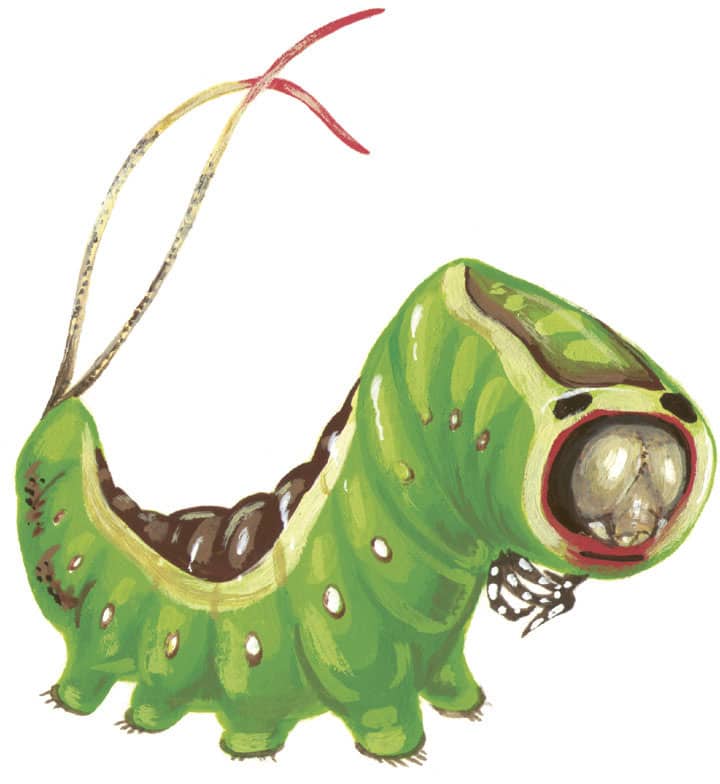
Together with beautiful painted illustrations provided by Miranda Zimmerman, we want to inspire you to look out for and study these unsung heroes of the natural world. To come to know them. To know their names. To shout from the rooftops about how amazing they are. And, hopefully, to give a helping hand in bringing them back to a former glory.
This really is the Planet of the Insects, after all. I hope, through books like this one, that we can keep it that way.
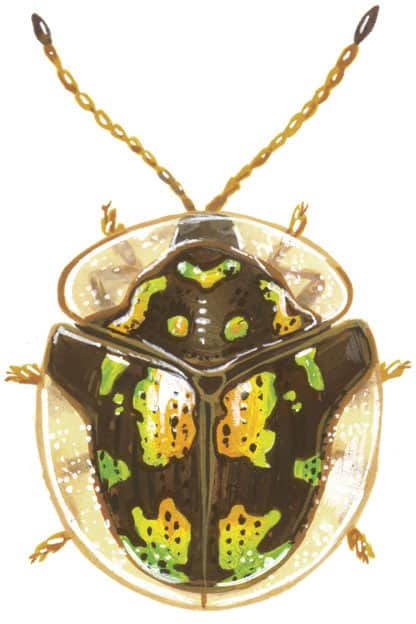
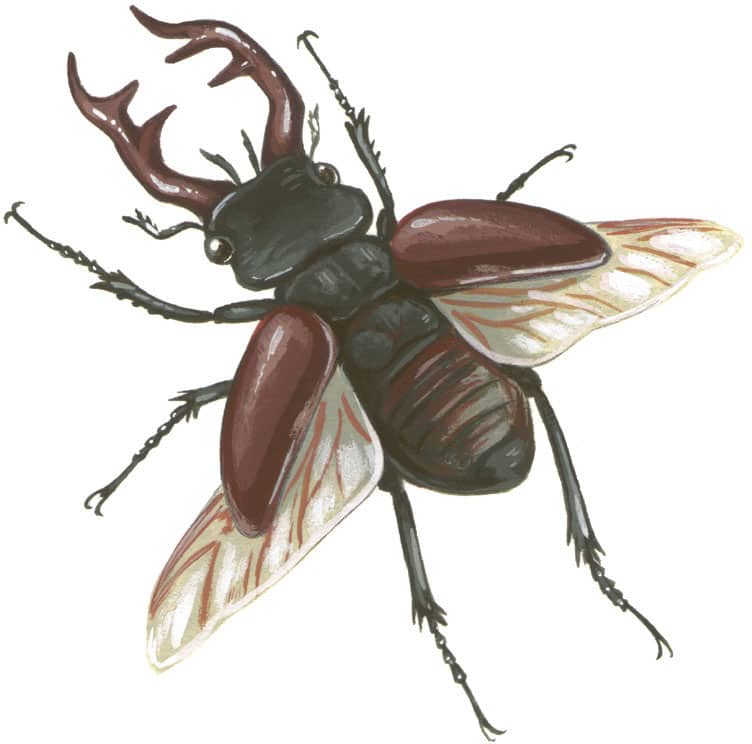
Insects are tremendously tough. As a group, insects have survived the meteorite that killed off most of the dinosaurs, and the intense droughts and floods that occurred for millions of years before. They have survived ice ages and earthquakes, and the most epic storms ever known. Yet, in the modern day, insects face a new threat humans.
In recent times, humans are changing the planet in lots of different ways all at once. At this exact moment, for instance, tropical forests are being cut down or burned to make space for cattle farming. Wetlands are being drained to make places to plant crops. Hedgerows and meadows are being removed to make space for new houses or roads. But these places provide important homes for thousands of different kinds of insects. When these habitats disappear, so too do the insects that have adapted to live there. Often, they are gone forever.
Scientists from around the world have only recently started looking at how many insects may be suffering from widespread changes to habitats that humans are causing. What these scientists are discovering is very worrying. Almost half of the 180,000 known species of moths and butterflies are likely to be drifting slowly toward extinction, and many beetles, for example, are close behind. Pollinating insects, including many species of bee and fly, are also edging closer and closer to disappearing forever.
The fact that Earths climate is changing causes more problems for some insects. Long weeks of unpredictable winter storms, for instance, can kill off food plants for insect larvae, squeezing some unique insect species closer and closer toward extinction. Likewise, climate change can cause long periods of warmer weather, which allows more competitive insect species to move in, pushing native insects out of the ecosystem jobs they need to survive. These ecosystem invaders can also bring with them diseases, some of which can be dangerous to humans.
More than any other group of animals on Earth, the insects are true survivors. For this reason, it is highly unlikely that our changing planet will lead to the loss of every insect species. However, it is clear that the survival of some of the most charismatic and beneficial insect species is far from secure and so we must do all we can to save them.
Font size:
Interval:
Bookmark:
Similar books «Encyclopedia of Insects»
Look at similar books to Encyclopedia of Insects. We have selected literature similar in name and meaning in the hope of providing readers with more options to find new, interesting, not yet read works.
Discussion, reviews of the book Encyclopedia of Insects and just readers' own opinions. Leave your comments, write what you think about the work, its meaning or the main characters. Specify what exactly you liked and what you didn't like, and why you think so.



